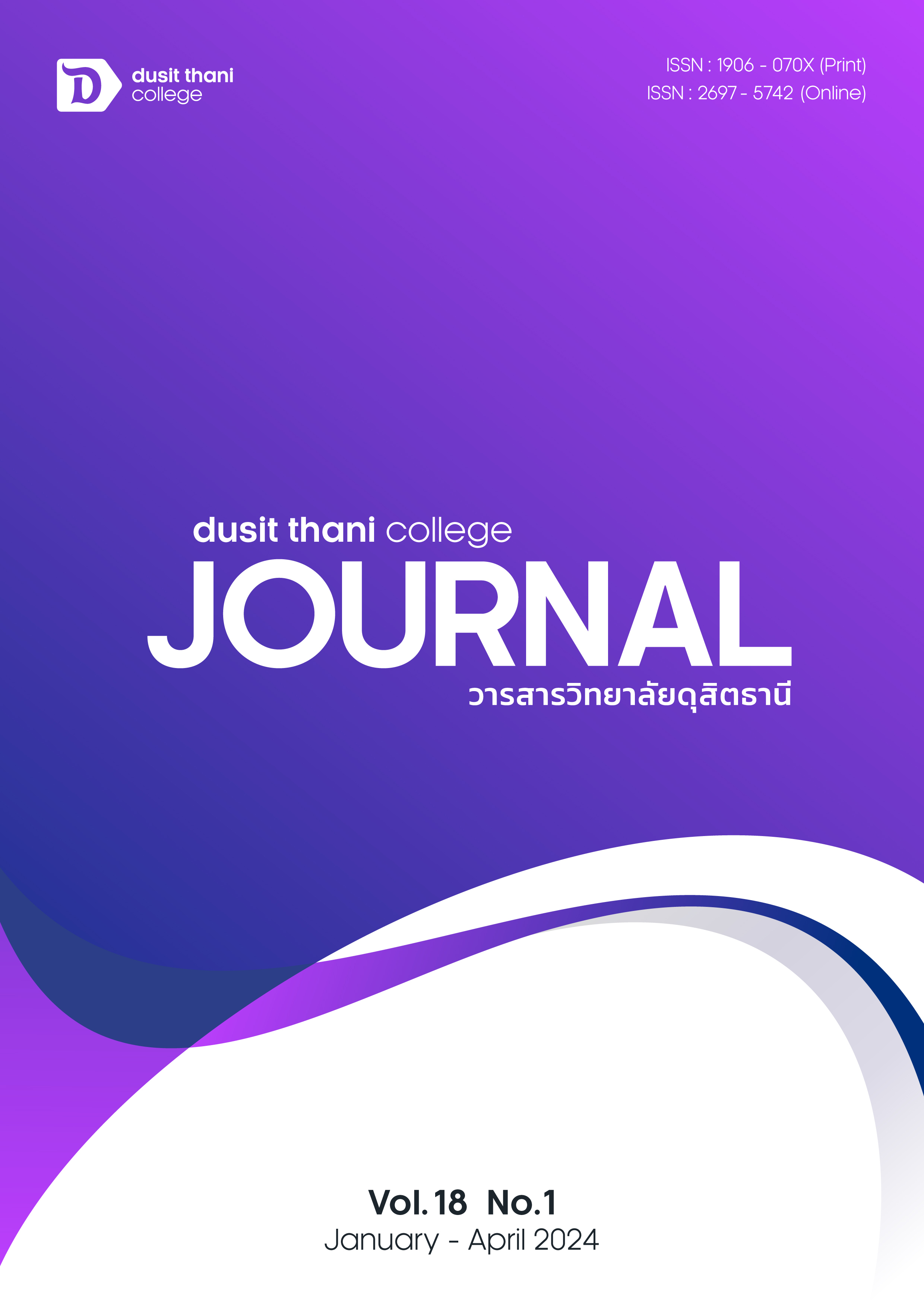Developing and Evaluating the Nutritional Properties of Local Food in a Set Menu for Tourists at Tai Lue Community, Chiang Rai Province
Main Article Content
Abstract
The aims of this research were 1) to study local food wisdom, 2) to develop local food standards in set menus for tourists, and 3) to evaluate the nutritional values of the local food products served to tourists. Data was collected through secondary and primary approaches. Primary sources of data collection used were focus groups, participant observation of the food production activity, and assessment of the nutritional values of local food menus, using the INMUCAL-Nutrients program. The focus group sample comprised a diverse of 10 participants knowledgeable about local food, including local food experts, local community leaders, provincial culture officers, academic food experts, community development officers, and tourist representatives. Participants were recruited through snowball sampling. The findings indicate that local food production and consumption is based on wisdom from the Tai Lue ethnic group. Ingredients for menu items are sourced from within the local community and the Khong River area. Local food wisdom was passed on from older family members by women, especially during local festivities. The current set menu is iconic and displays the local way of life, geography, tradition, culture, cooking process, wisdom of eating local healthy ingredients, and unique eating customs. The set menu for tourists is based on typical food used by locals in daily life, but more meat is added for guests. The set menus contain five sets of savory food served with sticky rice. The villagers don’t eat sweets after meals. The nutritional values of a set menu for four guests provide energy of about 3267.06 kilocalories, and comprising protein (179.95 grams), fat (149.73 grams), carbohydrates (300.03 grams), calcium (538.44 grams), vitamin A (1129.2 RAE) and vitamin C (254.24 RAE). This research will contribute to improving the Tai Lue set menu for tourists, increasing community revenue, and the recording of standard recipes of local food for the community. Moreover, findings set a high standard for the local set menu by showing the nutritional properties of the food menu.
Article Details

This work is licensed under a Creative Commons Attribution-NonCommercial-NoDerivatives 4.0 International License.
Article Screening Policy
- All research and academic articles to be published must be considered and screened by three peer reviews in the relevant field / article.
- All articles, texts, illustrations and tables published in the journal are the personal opinions of the authors. Editors don't always have to agree. And no responsibility whatsoever is the sole responsibility of the author.
- The articles to be published must never be published. Where did you first publish? And not in the consideration of other journals If the audit found that there has been a duplicate publication It is the sole responsibility of the author.
- Any article that the reader sees as being plagiarized or impersonated without reference. Or mislead the work of the author Please let the journal editor know it will be your greatest blessing.
References
Aromkliang, T. and Chatraphorn, S. (2014). Sustainability of local wisdom transferring on Lanna food. Kasetsart Journal Social Science. 35(2): 189-205.
Azavedo, M. (2019). Why Do tourists attend cooking classes? Some indications from Thailand. Academic Journal of Economic Studies, 5(4): 44-51.
Bjork, P. (2016). Local food: A source for destination attraction. International Journal of Contemporary Hospitality Management, 28(1): 177-194
Community Development Office of Chiangrai (2018). Summary of results OTOP Navatiwithi Tourism Community Project, Chiangrai Province. Chiangrai: Provincial Community Development Office of Chiangrai, Community Development Department, Ministry of Interior.
Dathkulchon, J. (2009). Thai set menu. Bangkok: Petchkanruen.
Duangmanee, K. (2021). The cultural heritage of typical Chinese ethnic food in Trang province. Journal of Humanities and Social Sciences Thonburi University, 15(2): 150-162.
Hall, M., Mitchell, R., and Sharples, L. (2003). Consuming places: the role of food, wine and tourism in regional development. In C. M. Hall, B. Cambourne, L. Sharples, N. Macionis, & R. Mitchell (Eds.). Food Tourism Around the World: Development, management and markets. Oxford: Butterworth-Heinemann.
Intakan, W. and Siwnguan, K. (2021). The development of local food recipes to tourism set menus of Bang Krathum district Phitsanulok province. Phetchabun Rajabhat Journal, 23(1): 33-44.
Kaimook, N. and Suwanpratest, O.(2020). From local wisdom to tourist set menu: a case study of Ban Thung Luang Kirimas distinct Sukhothai and Ban Wang Won Srisatchanalai distinct Sukhothai. Journal of Community Development Research (Humanities and Social Sciences), 13(2020): 109-127.
Lertchavalitsakul, B. (2012). Shan Ethnic food: The cultural politics of taste in Chiang Mai City. Journal of Sociology and Anthropology. 31(2): 137-168.
Nitiworakarn, S. (2014). Mon cuisine. Journal of Cultural Approach, 15 (28): 39-58.
Poomdonming, T. (2021). “Mee Ying Hed Pla” a tale of food, home and women’s lives in the Songkhram river basin. The Thai Feminist Review, 8(2): 2-24.
Porter, M. E. (2004). Building the microeconomic foundations of prosperity: Findings from the business competitiveness index. In M. E. Porter, K. Schwab, & X. Sala-i-Martin (Eds.), The global competitiveness report 2003-2004. Oxford: Oxford University Press: 29-56.
Praditsathaporn, C., Doungtip, E., ITiin, N., Pinpu, M. & Wongkinee, W. (2017). Traditional food recipe in Phayao: Inheritance of local wisdom and the nutritional value. Area Based Development Research Journal, 9(4): 297-313.
Sakdadech, S. (2006). Chanthaburi local food. Faculty of Science an Technology. Rambhai Barni Rajabhat University.
Surakarn, C (2011). Nakhorn food culture during the 10th month. Nakhon Si Thammarat Rajabhat University. 26-39.
Wahlqvist , Mark L., Lee, MS. (2007). Regional food culture and development. Asia Pac J Clin Nutr, 16(Suppl 1):2–7.


